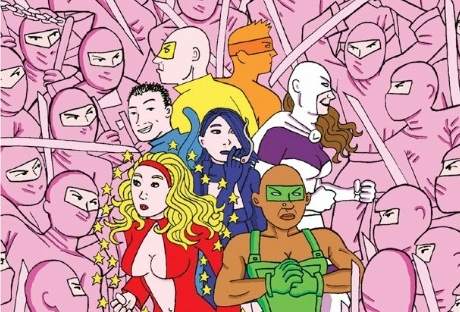I really wanted to like Spandex, I really did.
When I heard about the concept for the first time, I thought it sounded clever: a world in which three most powerful team of superheroes is composed of all alternatively gendered super people.

Unfortunately, the work doesn’t really hit its potential.
First off, the conflicts are mostly melodramatic. The team has monsters to fight and innocents to save, but mostly the conflict is among the team, which would be fine except that it’s not about team building or working together, it was all sexual tension and relationship drama.
This wouldn’t even be so bad – except that the dialogue itself is not very compelling, leaving the major character conflicts simultaneously flat and over-charged. The actual monster fights are far too easy, and resolved in ways that frequent super-hero comics readers will find over-simplified and uncreative.
Worse, however, is that the characters are poorly developed. The all feel like TV stereotypes of their particular lifestyles, rather than real people. The only character who becomes slightly dimensional, and thus somewhat relatable is x who has a bit of an identity crisis. Even that, however, felt a bit shallow, since it was still focused on sexuality, and seemed like the kind of conflict of straight writers would come up with for the gay character on a sit-com.
In addition to these character issues is the illustrations. Just as the characters are flatly written, they are flatly drawn. One does not get a sense that there is any roundness to the figures at all, and where some are clearly intended to be illustrated as fit and attractive, they are only misshapen blobs of colors. One thing to be said about the art is that it’s always clear what is happening. Indeed, the illustrations never become confusing as to what action is occurring, but at the same time, there is no perspective; there is no depth to the drawings.
I’m not really sure who this book is for. At some moments I was sure it was intended to be a farce, making fun of the pop culture stereotypes of these character’s lifestyles as a way of creating humor for those who are actually immersed in the culture of the LBGT community, but at other moments I was sure that those depictions were being used just as they are used in sit-coms, as a way to dumb down the characters for a straight audience’s amusement.
It’s really this lack of direction, as if the lens of the work doesn’t know upon what to focus, that draws the reader away from the pages. Combined with an illustrative style that is less than engaging, there is not much left to Spandex at all.






